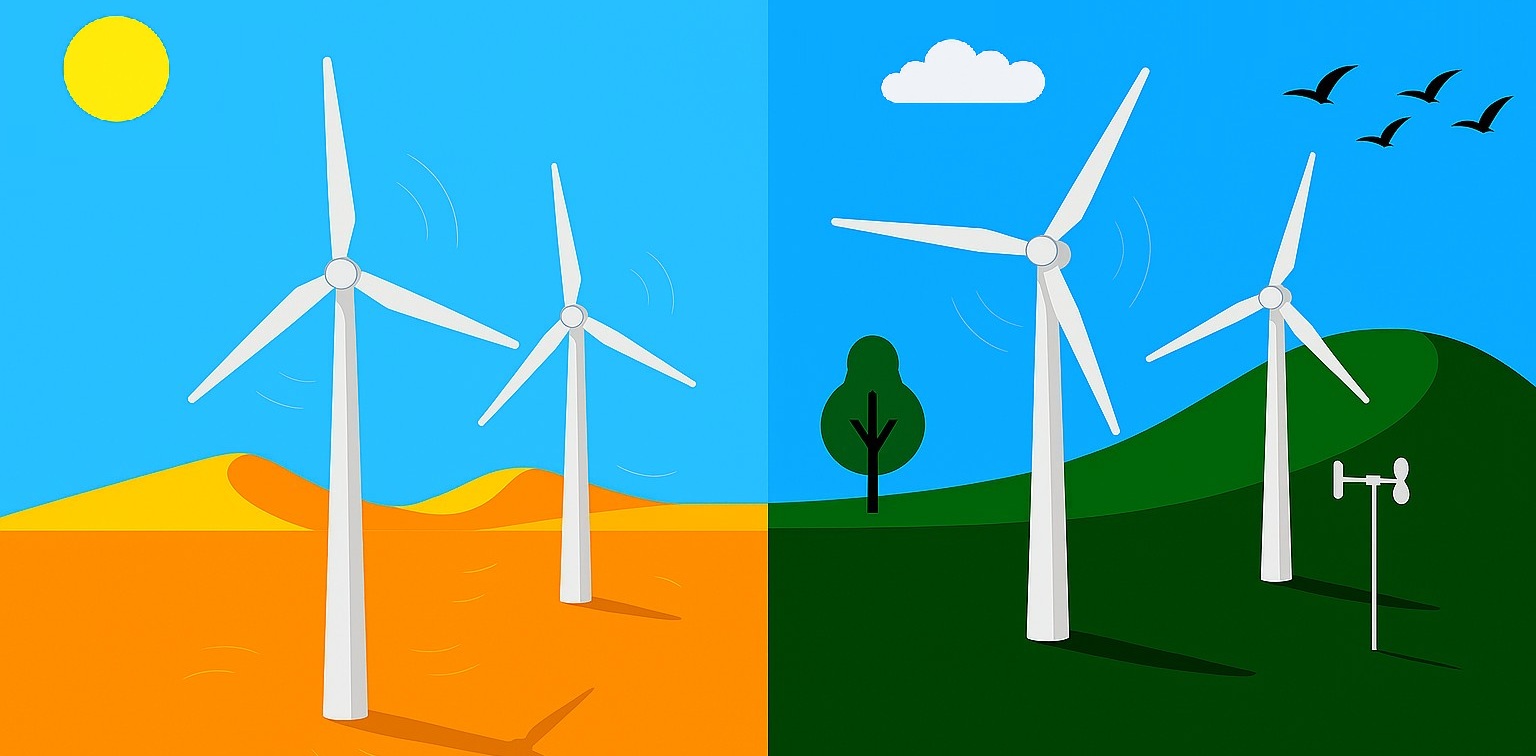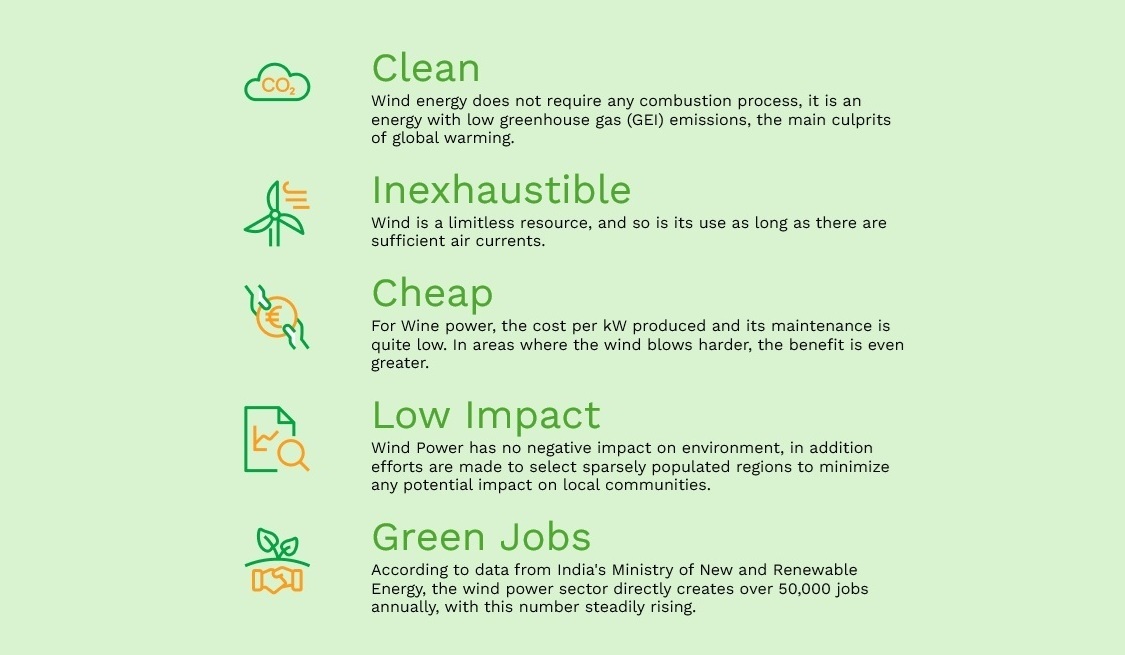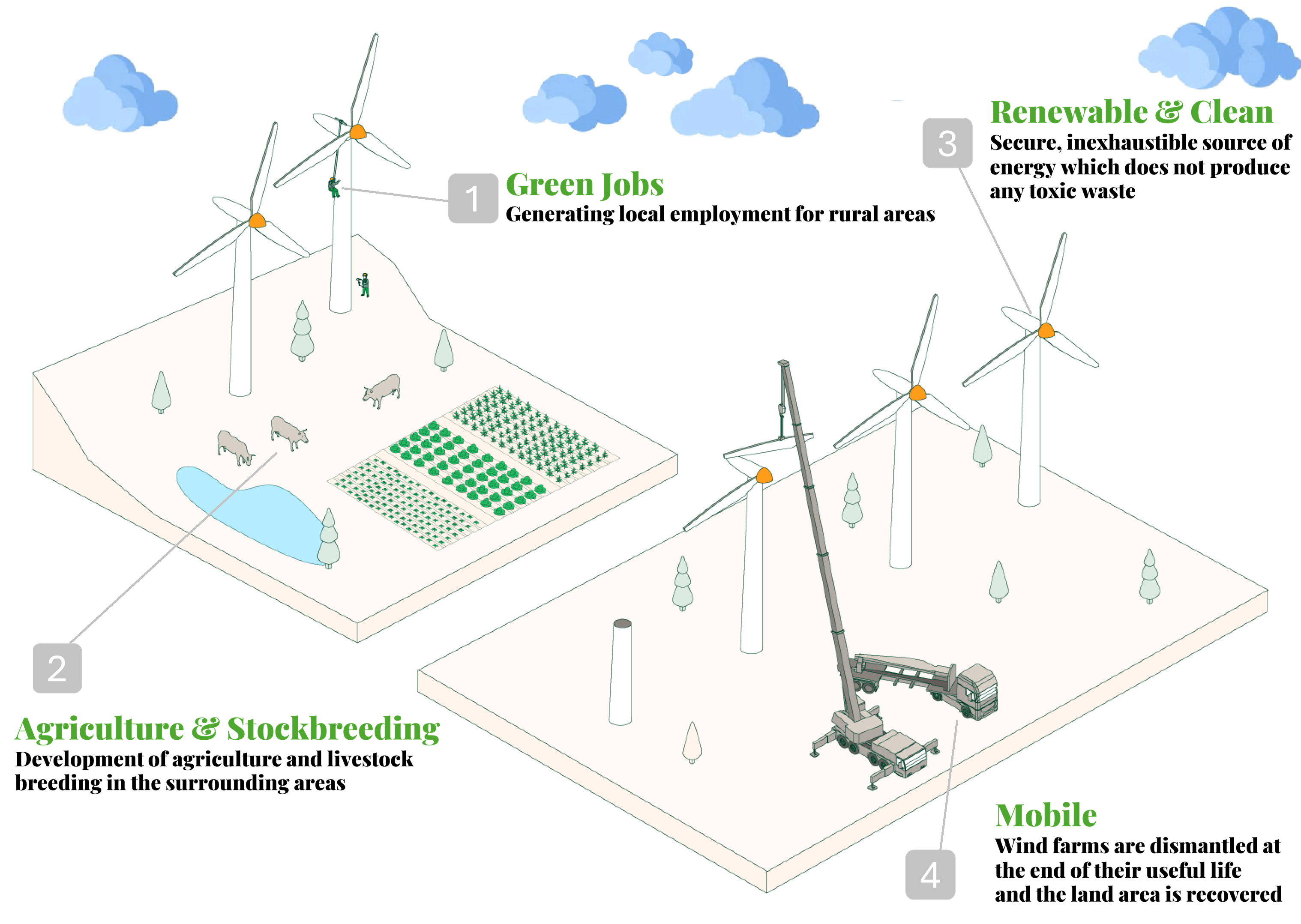

At Adroit Green Energy, combating climate change remains a cornerstone of our mission, a commitment we uphold through our global renewable energy facilities. Wind power represents a major component of our renewable energy strategy during this period, encompassing 140 GW from onshore sources and 30 GW from offshore installations. This supports India’s ambitious goal of reaching 500 GW of non-fossil fuel-based capacity by 2030 and its pledge to achieve net-zero emissions by 2070.

Wind energy converts the limitless power of wind into electricity, making it a sustainable and valuable investment for the future. Harnessing this renewable resource involves construction of wind farms, either on land or at high sea, equipped with numerous wind turbines.
Onshore wind energy is produced by utilizing the movement of air masses through wind turbines installed on land. These turbines convert the kinetic energy of wind into mechanical rotational energy, which is then transformed into electricity and connected to distribution networks. As a renewable, clean, and infinite energy source, wind power has been harnessed for centuries, with its applications evolving alongside technological advancements.
Similarly, Offshore wind energy operates using the same principles, with wind farms situated at sea. Overall, wind energy is a sustainable solution that supports local economies while contributing to a better future.
Solar radiation impacts the Earth's surface unevenly, warming some regions more than others. In warmer areas, lighter air rises, forming low-pressure zones, while in cooler regions, heavier air sinks, creating high-pressure zones. The pressure differences cause air to flow, generating wind—a dynamic force capable of producing energy.
Wind power provides significant advantages, benefiting both the companies that invest in it and society as a whole by reducing the effects of climate change.

Constructing a wind farm is a highly intricate process that requires analysing various factors to determine the optimal location and timing for its development. Among the key elements evaluated are the spatial, temporal, and vertical variations of wind over time. Tools such as wind vanes and anemometers are used to study these parameters, enabling the prediction of the wind farm’s future production to ensure efficiency. Advanced supercomputing techniques further refine the wind farm’s design, maximizing its energy generation potential.
